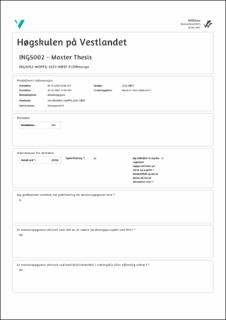| dc.description.abstract | Lithium-ion (Li-ion) batteries have been widely used for battery energy storage systems [1]. Batteries are important due to their vast applications, ranging from consumer electronics to electric vehicles, bikes, scooters, hoverboards, etc. [2]. Batteries are also used as energy storage units for renewable sources such as wind and solar energy [3]. In certain situations, manufacturers are not solely worried about the onset of thermal runaway in a single cell, but also about the potential spread it might cause to adjacent cells in close proximity [4].
Commercial alkaline and Li-ion batteries were exposed to a controlled butane flame to investigate the propagation with the effect of distance (0 cm, 0.5 cm and 1 cm) between the cells in the module. This study includes six scenarios with a total of 13 experiments conducted for both single cell experiments which shows the behaviour of these cells and 3X3 configuration which is used to determine propagation and was conducted in the winter in the Western Part of Norway. The ambient temperature ranged from -3 to 8 °C with a highly windy condition when the experiment was conducted.
The result of the study resulted in propagation in only one cell in a 3 X 3 configuration with 0 cm spacing. Thus, more cell spacing reduces the likelihood and impact of propagation and damage in another cell. TR behaviours were experienced in 5 different ways which can pose a high risk of contributing to propagation such as diffused flame with or without explosion, and jet flame, which can lead to propagation beyond the 0 cm scenario.
From this study, a recommendation of 0.5 cm (5 mm) spacing should be implemented for modules using an 18650 Li-ion battery under similar temperate conditions observed in this work. Due to various behaviour displayed during TR for reaction with flames or fire, can go further to transfer heat in a close cell and elevate their temperature to exceed the thermal limit which can result in propagation and can have severe consequences in a more confined space. Though the spacing recommendation can impact the weight of the module case, safety is more of a concern. | en_US |

